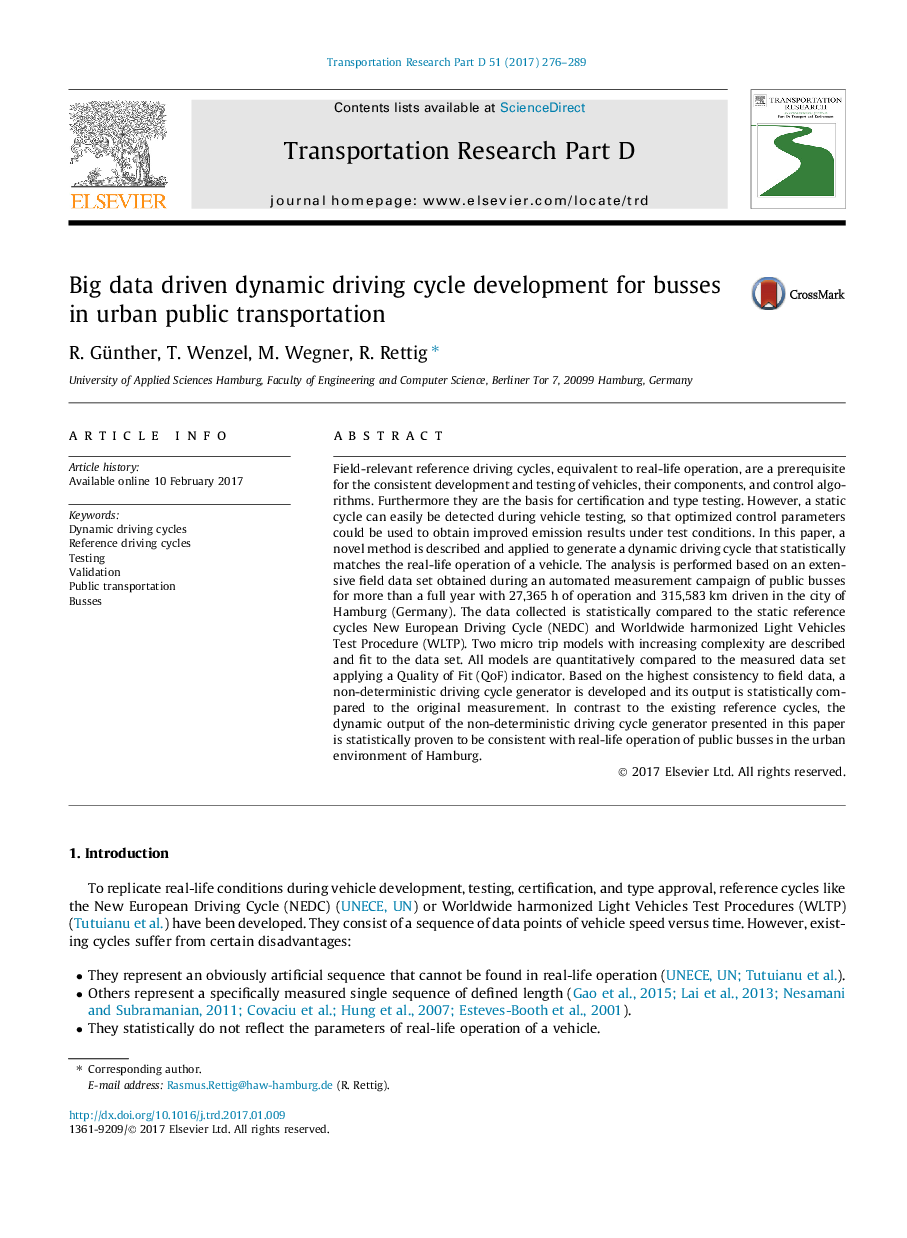| Article ID | Journal | Published Year | Pages | File Type |
|---|---|---|---|---|
| 5119403 | Transportation Research Part D: Transport and Environment | 2017 | 14 Pages |
Field-relevant reference driving cycles, equivalent to real-life operation, are a prerequisite for the consistent development and testing of vehicles, their components, and control algorithms. Furthermore they are the basis for certification and type testing. However, a static cycle can easily be detected during vehicle testing, so that optimized control parameters could be used to obtain improved emission results under test conditions. In this paper, a novel method is described and applied to generate a dynamic driving cycle that statistically matches the real-life operation of a vehicle. The analysis is performed based on an extensive field data set obtained during an automated measurement campaign of public busses for more than a full year with 27,365Â h of operation and 315,583Â km driven in the city of Hamburg (Germany). The data collected is statistically compared to the static reference cycles New European Driving Cycle (NEDC) and Worldwide harmonized Light Vehicles Test Procedure (WLTP). Two micro trip models with increasing complexity are described and fit to the data set. All models are quantitatively compared to the measured data set applying a Quality of Fit (QoF) indicator. Based on the highest consistency to field data, a non-deterministic driving cycle generator is developed and its output is statistically compared to the original measurement. In contrast to the existing reference cycles, the dynamic output of the non-deterministic driving cycle generator presented in this paper is statistically proven to be consistent with real-life operation of public busses in the urban environment of Hamburg.
